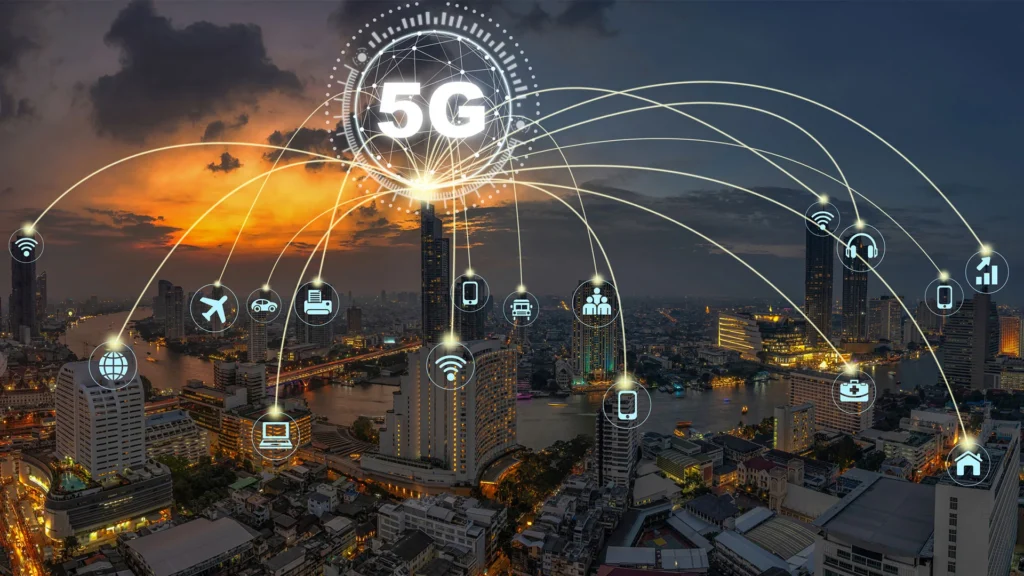The Future of 5G: What to Expect in 2024 and Beyond is a topic that has garnered significant attention as the world eagerly anticipates the next phase of 5G technology. As we look ahead to 2024 and beyond, the evolution of 5G is poised to bring about transformative changes in various industries, including telecommunications, healthcare, transportation, and entertainment. The deployment of advanced 5G networks, the proliferation of 5G-enabled devices, and the development of innovative applications are expected to drive the widespread adoption of 5G technology and pave the way for unprecedented connectivity and capabilities. With the continued advancement of 5G infrastructure and the emergence of new use cases, the future of 5G holds immense potential for shaping the way we live, work, and interact in the coming years.
The Evolution of 5G Technology
5G technology has been rapidly evolving since its initial introduction, and by 2024, we can expect even more advancements. One of the key areas of development will be in network infrastructure, with the continued rollout of small cell networks to support the increasing demand for high-speed, low-latency connectivity. This will enable a more seamless and reliable 5G experience for users across various industries, including healthcare, manufacturing, and entertainment.
Furthermore, the evolution of 5G technology will also involve enhancements in the capabilities of devices and equipment that are compatible with 5G networks. This could include the widespread adoption of 5G-enabled IoT devices, smart vehicles, and augmented reality technologies, all of which will contribute to the expansion of the 5G ecosystem and its integration into daily life.
Impact on Industries and Applications
The widespread adoption of 5G technology will have a significant impact on various industries and applications. In healthcare, for example, 5G’s low latency and high bandwidth will enable the development of remote surgery techniques and real-time monitoring systems, revolutionizing the way healthcare is delivered. Similarly, in manufacturing, the use of 5G-enabled IoT devices and robotics will lead to more efficient and automated production processes.
Moreover, the entertainment industry will experience a transformation with the widespread availability of high-speed 5G connectivity. This will pave the way for immersive virtual reality experiences, high-definition streaming, and interactive gaming applications that were previously not feasible with slower network speeds. Overall, 5G technology will drive innovation and create new opportunities across a wide range of industries.
Challenges and Opportunities
Despite the promising advancements in 5G technology, there are also challenges that need to be addressed. One of the main challenges is the deployment of 5G infrastructure, which requires significant investment and coordination among telecommunications companies, government agencies, and other stakeholders. Additionally, there are concerns related to cybersecurity, privacy, and the potential impact of 5G on the environment.
However, these challenges also present opportunities for innovation and collaboration. As 5G technology continues to mature, there will be opportunities for new business models, partnerships, and technological developments that address the existing challenges and pave the way for a more sustainable and secure 5G ecosystem.
Regulatory and Policy Considerations
The widespread deployment of 5G technology also raises important regulatory and policy considerations. Governments and regulatory bodies will need to establish frameworks for spectrum allocation, infrastructure deployment, and compliance with security and privacy regulations. Additionally, there will be a need for policies that address digital inclusion and ensure that 5G technology is accessible to all communities, regardless of their socio-economic status.
Furthermore, international collaboration and standardization will be crucial in ensuring interoperability and seamless connectivity across different regions. As 5G technology becomes more prevalent globally, there will be a growing need for harmonized regulatory approaches that facilitate cross-border operations and innovation.
The Role of 5G in Smart Cities
5G technology is expected to play a pivotal role in the development of smart cities, where interconnected devices and sensors will enable efficient public services, intelligent transportation systems, and sustainable urban development. With 5G’s ability to support a massive number of connected devices and provide real-time data transmission, smart city initiatives will benefit from enhanced connectivity and data processing capabilities.
Moreover, 5G will enable the implementation of advanced technologies such as traffic management systems, environmental monitoring, and public safety applications, contributing to the overall quality of life in urban areas. As smart city initiatives continue to expand, 5G will be a foundational enabler of the interconnected infrastructure that powers these innovative urban environments.
The Future of 5G and Artificial Intelligence
5G technology and artificial intelligence (AI) are poised to converge in the future, creating new opportunities for intelligent automation, predictive analytics, and real-time decision-making. The high-speed, low-latency capabilities of 5G networks will enhance the performance of AI applications, particularly in scenarios that require rapid data processing and response times.
As 5G technology continues to evolve, we can expect to see the integration of AI-powered functionalities into 5G networks, enabling dynamic network optimization, intelligent resource allocation, and proactive maintenance. This fusion of 5G and AI will drive innovation across various sectors, including telecommunications, healthcare, and autonomous systems.
Environmental and Sustainability Implications of 5G
While 5G technology offers numerous benefits in terms of connectivity and innovation, there are also environmental and sustainability implications that need to be considered. The deployment of 5G infrastructure, including small cell networks and data centers, requires energy resources and may contribute to an increase in carbon emissions.
However, there are ongoing efforts to mitigate the environmental impact of 5G technology, such as the development of energy-efficient network components, renewable energy integration, and responsible e-waste management practices. Additionally, 5G-enabled smart solutions, such as energy management systems and environmental monitoring technologies, can contribute to overall sustainability efforts and the reduction of carbon footprints.
Security and Privacy in the 5G Era
As 5G technology continues to advance, there is a growing need to address security and privacy concerns associated with the increased connectivity and data processing capabilities. The interconnected nature of 5G-enabled devices and systems creates new attack surfaces and vulnerabilities that could be exploited by malicious actors.
To mitigate these risks, robust security measures, such as encryption protocols, authentication mechanisms, and secure network architectures, will be essential in safeguarding 5G infrastructure and user data. Additionally, privacy regulations and data protection frameworks will need to evolve to address the unique challenges posed by the extensive data collection and processing capabilities of 5G technology.
| Aspect | Expectation |
|---|---|
| Speed | Even faster download and upload speeds, potentially reaching 10 Gbps |
| Coverage | Widespread coverage in urban, suburban, and rural areas, with improved connectivity |
| Latency | Significantly reduced latency, enabling real-time applications like augmented reality and autonomous vehicles |
| IoT | Massive IoT deployments for smart cities, industrial automation, and connected infrastructure |
| Security | Enhanced security features to protect against cyber threats and safeguard user privacy |
The future of 5G in 2024 holds promises of faster speeds, widespread coverage, reduced latency, massive IoT deployments, and enhanced security features. These advancements will pave the way for innovative applications and technologies, transforming various industries and improving the overall connectivity experience for users.



